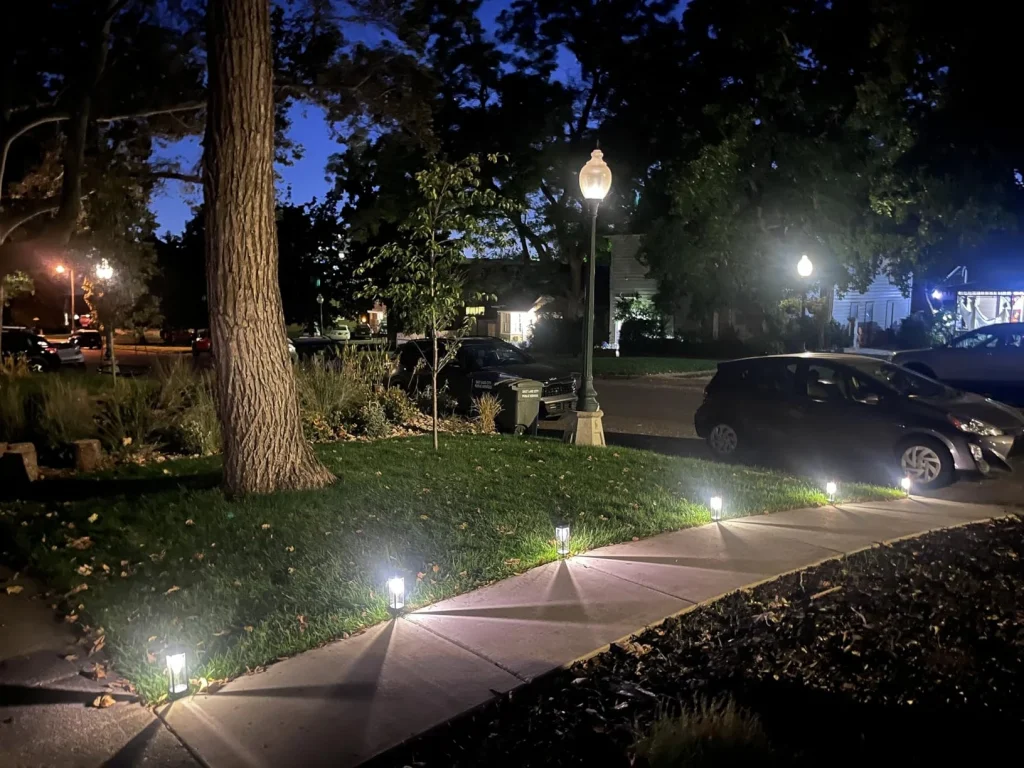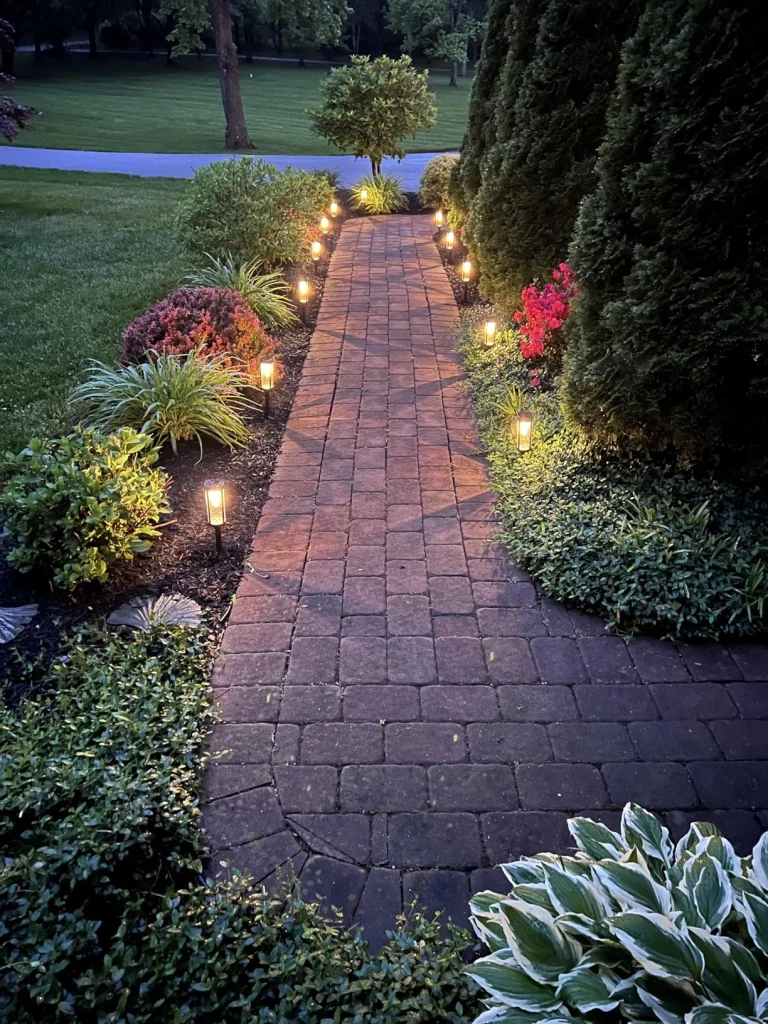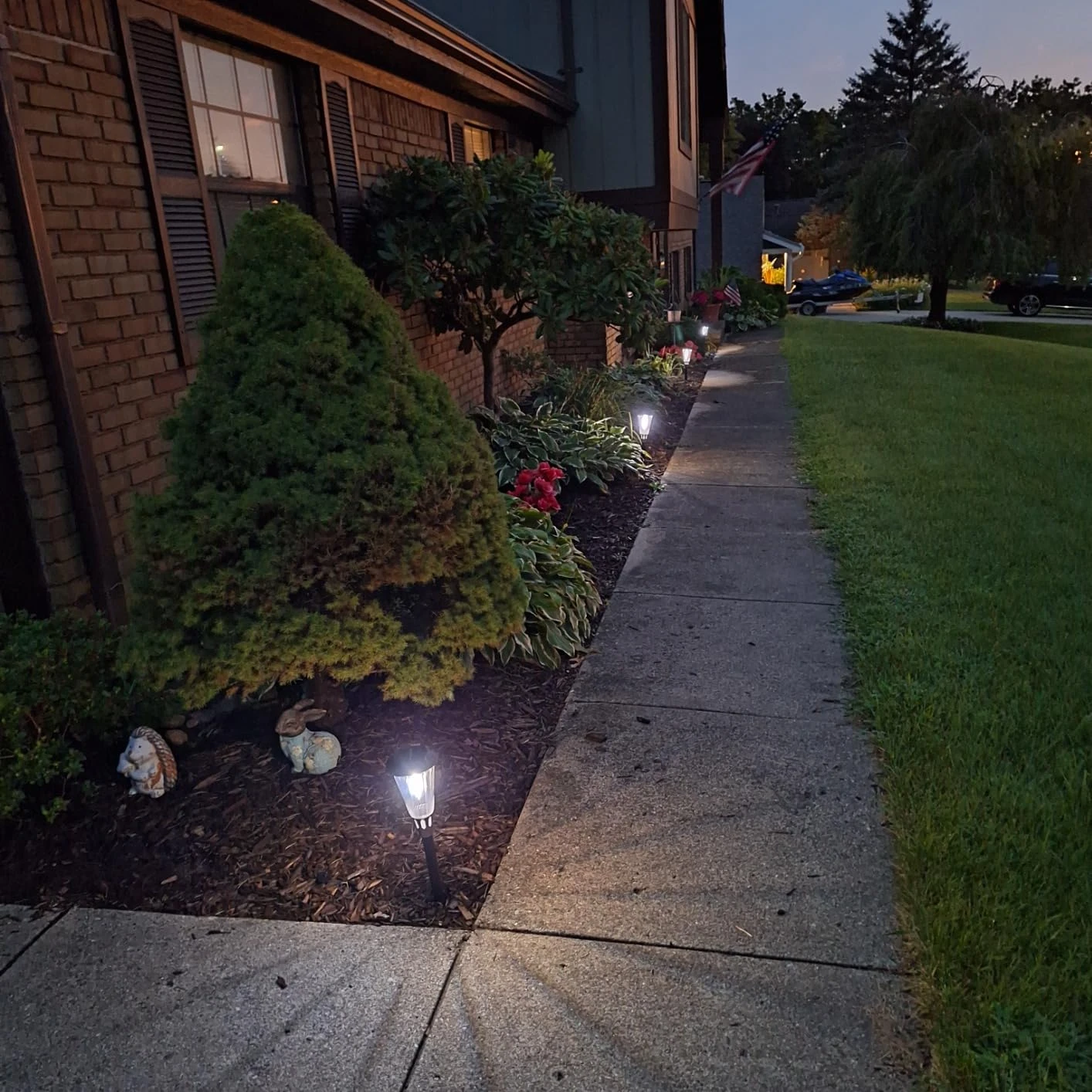Last winter, I watched my elderly father hesitate on our backyard ramp, nearly stepping off the edge in the dim evening light. Later, he fumbled for the handrail in the dark, his hand grasping at nothing. As a homeowner in the northern U.S., where icy winters and early sunsets make outdoor paths treacherous, I knew we needed better lighting for our accessible pathways. For families with elderly or mobility-impaired loved ones, safe navigation is everything. That’s where yard accessible pathway solar lights come in—they illuminate ramps, handrails, and entrances, ensuring every step is steady and secure. This guide shares how I used solar lights to make our home’s pathways safer for my parents, focusing on ramps, handrails, and entry points, with an emphasis on ease and safety.

Why Solar Lights Are Ideal for Accessible Pathways
For families with elderly or mobility-impaired members, outdoor pathways like ramps or walkways need clear, reliable lighting. Poor visibility can lead to missteps or falls, especially at dusk or in winter’s short days. Traditional wired lights are costly to install and maintain, and battery-powered ones require constant replacements. Yard accessible pathway solar lights are different: they’re easy to install, use no electricity, and are designed with features like anti-glare beams and simple switches that seniors can manage. As someone who worries about my parents’ safety, I’ve found these lights offer peace of mind by guiding every step without overwhelming or confusing anyone.
Here’s how I set up our accessible pathways with three types of solar lights, tailored for ramps, handrails, and entrances, plus details on safety features and cold-weather durability.
Light Types for Safe, Accessible Pathways
Each part of an accessible pathway has unique needs: ramps need surface lighting, handrails require clear guidance, and entrances must be easy to find. After testing options, I chose three types of yard accessible pathway solar lights that make our ramp and entryway safe and welcoming. Below, I break down each type, where to place it, and why it’s effective.
- Ramp Surface: Embedded Strip Lights
Our backyard ramp, used by my father with his walker, needed lighting that highlights the non-slip surface. I installed 100-lumen warm white (3000K) embedded strip lights every 12 inches (30 cm) along the ramp’s edges. These lights shine downward, illuminating the textured, non-slip surface without glare, making each step visible. The flush design ensures they don’t interfere with wheelchairs or walkers.
Why it works: The warm white light clearly shows the ramp’s texture, helping prevent missteps, and the spacing ensures even coverage.
Best for: Wheelchair ramps, sloped walkways, or wide paths. - Handrail Side: Adhesive Light Strips
Handrails are critical for stability, but my mother struggled to see ours at night. I attached 50-lumen warm yellow (2700K) adhesive solar light strips along the underside of the handrails. These flexible strips bend with the rail’s curves, lighting up the hand position without shining in anyone’s eyes. They’re bright enough to guide a firm grip but soft enough to feel cozy.
Why it works: The warm yellow glow makes the handrail easy to locate, reducing the risk of grasping at air, especially for shaky hands.
Best for: Handrails on ramps, stairs, or pathways. - Entrance: Motion-Sensing Entry Lights
Finding the ramp’s entrance in the dark was a challenge, so I installed 150-lumen motion-sensing solar lights at the entry point. These activate within a 10-foot (3-meter) range, staying on for 60 seconds, casting a bright, soft white (3500K) beam to highlight the start of the path. They’re mounted at knee height to avoid dazzling anyone.
Why it works: The motion sensor ensures the light is on only when needed, saving battery and guiding users to the path’s start.
Best for: Entrances to ramps, walkways, or doorways.
These lights work together to create a safe, intuitive pathway. Below is a simple diagram suggestion to show how to angle the lights for maximum safety and comfort.
Lighting Angle Suggestions Diagram
| Area | Light Type | Angle | Purpose |
|---|---|---|---|
| Ramp Surface | Embedded Strip Lights | Downward, 90° to surface | Illuminate non-slip texture, avoid glare |
| Handrail | Adhesive Light Strips | Downward, 45° along rail | Light hand position, prevent eye dazzle |
| Entrance | Motion-Sensing Lights | Downward, 60° toward path | Highlight entry, guide first step |
Safety Features for Elderly Users
When choosing yard accessible solar pathway lights, safety and ease of use are critical, especially for seniors or those with mobility challenges. Here’s what I prioritize to ensure the lights are both effective and user-friendly:
- Anti-Glare Design
All my lights direct beams downward to prevent dazzle, which can disorient elderly users. The ramp and handrail lights use diffusers to soften the glow, while the entry lights angle away from eye level. This keeps vision clear and steps confident. - Non-Slip Surfaces
The embedded strip lights have textured tops to prevent slipping if stepped on, even in wet or icy conditions. This is crucial for ramps where a misplaced foot could cause a fall. - Manual Switch Option
While the entry lights are motion-sensing, the ramp and handrail lights have manual switches that are large and easy to press. My parents can turn them on or off without fumbling, which is a relief for their arthritis. - Food-Safe and Durable Materials
The lights are made from non-toxic, weather-resistant materials like ABS plastic or stainless steel, safe for outdoor use near gardens or patios where food is grown. They’re built to last without cracking or fading.
These features make yard accessible pathway solar lights practical and reassuring for families caring for elderly loved ones.

Climate Durability for Northern Winters
Living in a northern climate means dealing with freezing temperatures, snow, and rain. My yard accessible pathway solar lights are designed to handle these conditions without fail:
- Cold Resistance (-15°C/5°F)
The lights are rated to operate down to -15°C, with silicone seals that stay flexible in subzero weather. Last January, they worked flawlessly through a week of -10°F nights, keeping the ramp lit. - IP66 Waterproofing
With an IP66 rating, these lights are dust-tight and resist heavy rain or snowmelt. I’ve seen them stay functional after being splashed by slush from a snowblower. - High-Capacity Batteries
Short winter days limit solar charging, but these lights use cold-tolerant batteries that hold a charge for 8-10 hours. Even on cloudy days, they stay lit from dusk to bedtime.
These features ensure the lights remain reliable, no matter how harsh the weather gets.
Installation Tips for Accessible Pathways
Setting up yard accessible pathway solar lights is straightforward, but a few tips make them senior-friendly:
- Ramp Lights: Embed strip lights flush with the ramp’s edge, spacing them 12 inches apart. Use a concrete drill for permanent installation, and ensure solar panels face south for optimal charging.
- Handrail Lights: Attach adhesive strips under the handrail, following its curve. Clean the rail first for strong adhesion, and test the switch placement for easy reach.
- Entry Lights: Mount motion-sensing lights at knee height (about 2 feet) on posts or walls near the path’s start. Check the sensor’s 10-foot range to cover the approach.
Before winter, test all lights in the evening to confirm brightness and motion detection. For manual switches, ensure they’re accessible without bending or stretching.
Maintenance for Hassle-Free Use
Maintaining these lights is simple, which is key for busy families. Wipe solar panels every few weeks with a damp cloth to clear snow or dirt. Check adhesive strips on handrail lights after heavy rain, reapplying if needed (most kits include extras). If a light dims, replace the battery—most use AA rechargeables, and I keep spares in the garage. In spring, inspect embedded lights for debris and clean gently to maintain their non-slip texture.
Cost and Value
You might wonder if yard accessible pathway solar lights are worth the cost. Prices range from $15-30 per embedded strip light, $10-20 per handrail light strip, and $20-40 per motion-sensing entry light. For our 15-foot ramp, two handrails, and one entrance, I used 10 strip lights, two 10-foot handrail strips, and two entry lights, costing about $250. Compared to the cost of a fall or the stress of worrying about my parents, it’s a small price for safety. Plus, they’re solar-powered, so there’s no added electricity cost, and they last 3-5 years with minimal care.
Conclusion: Lighting the Way for Loved Ones
Using yard accessible pathway solar lights has transformed our home’s accessibility for my parents. The warm glow on the ramp shows every non-slip texture, the handrail lights guide their hands, and the motion-sensing entry lights welcome them to the path. These lights don’t just brighten the way—they give my family confidence that every step is safe, even on dark, icy nights. For anyone who’s ever worried about an elderly loved one slipping or struggling in the dark, yard accessible pathway solar lights are like a gentle guide, ensuring every step is steady and secure.

Comments